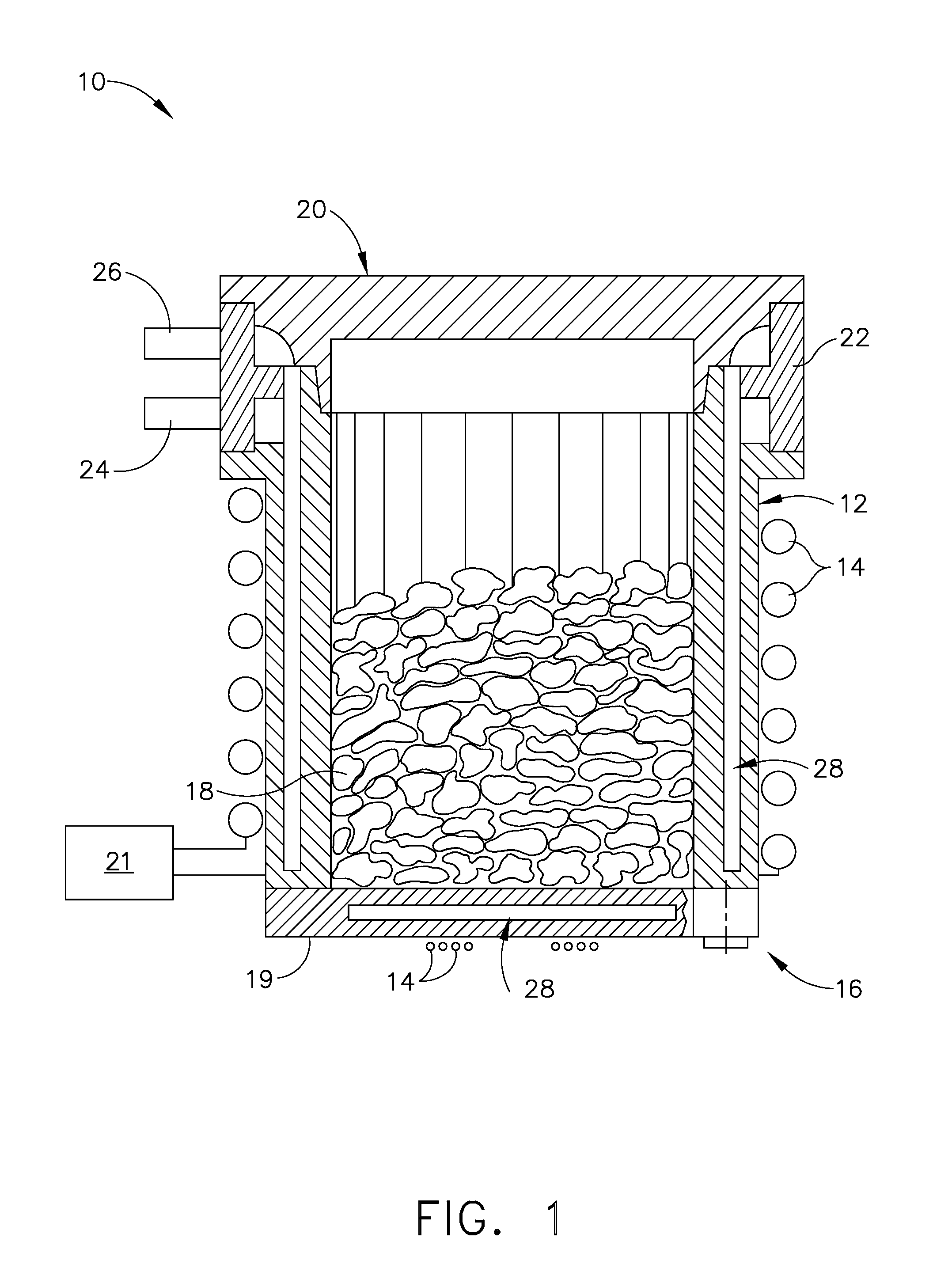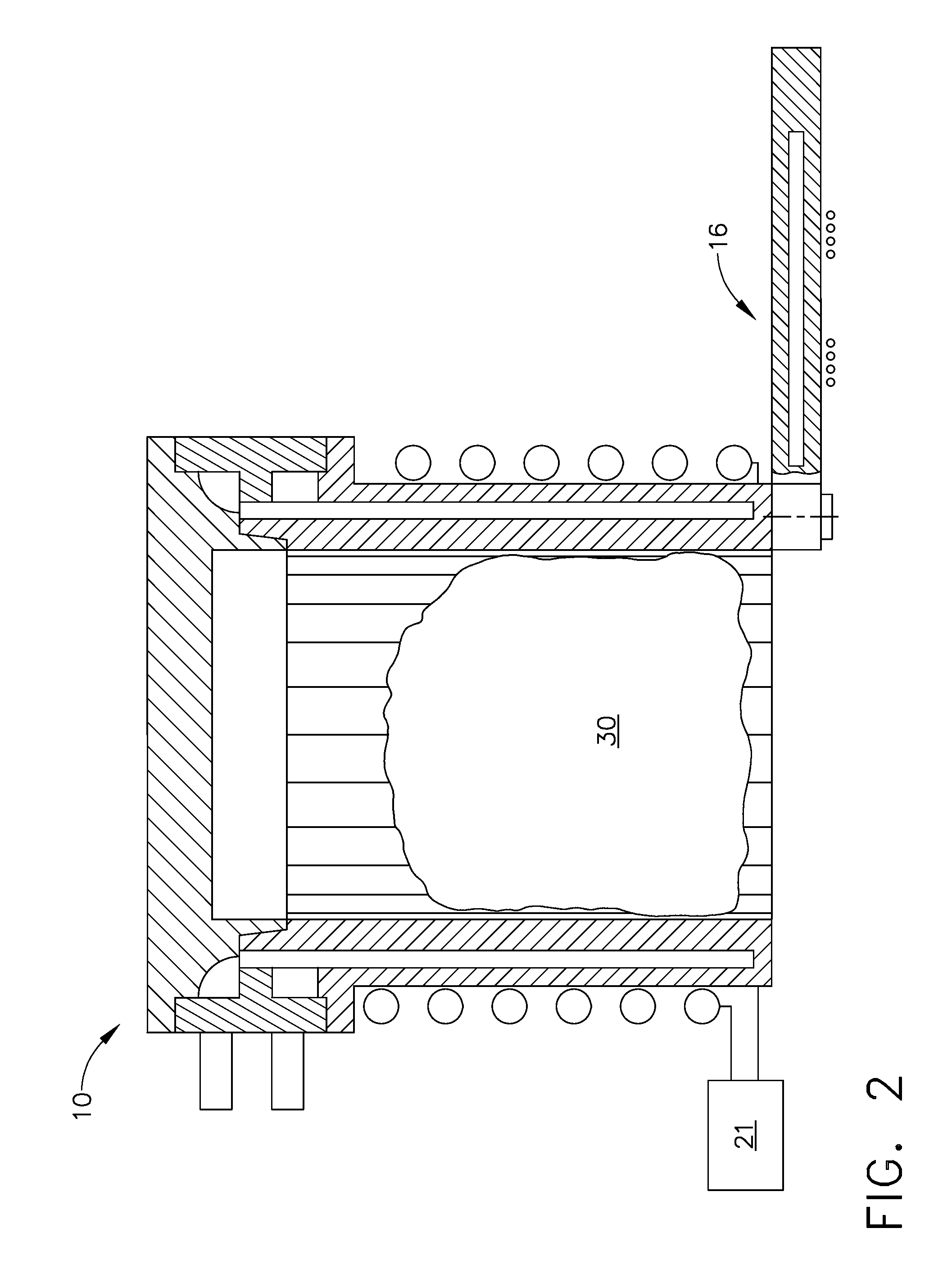Methods for centrifugally casting highly reactive titanium metals
a technology of titanium alloys and centrifugal casting, which is applied in the field of centrifugally casting highly reactive titanium alloys, can solve the problems of high cost of labor, difficult and expensive to produce non-standard alloys, and high cost of titanium electrodes used in the var process
- Summary
- Abstract
- Description
- Claims
- Application Information
AI Technical Summary
Problems solved by technology
Method used
Image
Examples
Embodiment Construction
[0021]Embodiments described herein generally relate to methods for centrifugally casting highly reactive metals, and in particular titanium alloys and titanium aluminide alloys, into net shape components, though the description that follows should not be limited to such.
[0022]In accordance with the description herein below, a cold wall induction crucible 10 having a body 12, can be provided, as shown in FIG. 1. Body 12 can be made from any metal having good thermal and electrical conductivity, such as, for example copper. Body 12 may be water-cooled to prevent the copper from melting during the heating of the crucible. More particularly, copper generally melts at about 1900° F. (about 1038° C.) and TiAl melts at about 2600° F. (about 1427° C.), and the copper in the crucible can form a low melting eutectic with the titanium. Water-cooling the crucible can prevent this from occurring. Water-cooling inlet 24 and outlet 26 may be used to circulate the cooling water through a plurality ...
PUM
| Property | Measurement | Unit |
|---|---|---|
| temperature | aaaaa | aaaaa |
| temperature | aaaaa | aaaaa |
| temperature | aaaaa | aaaaa |
Abstract
Description
Claims
Application Information
 Login to View More
Login to View More - R&D
- Intellectual Property
- Life Sciences
- Materials
- Tech Scout
- Unparalleled Data Quality
- Higher Quality Content
- 60% Fewer Hallucinations
Browse by: Latest US Patents, China's latest patents, Technical Efficacy Thesaurus, Application Domain, Technology Topic, Popular Technical Reports.
© 2025 PatSnap. All rights reserved.Legal|Privacy policy|Modern Slavery Act Transparency Statement|Sitemap|About US| Contact US: help@patsnap.com



